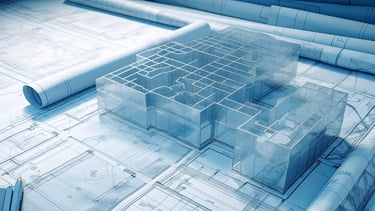Why is Building Information Modeling (BIM) important in AEC Industry?
BIM


Building Information Modeling (BIM) in the AEC Industry | Enhanced Collaboration, Visualization, and Efficiency
Building Information Modeling (BIM) is a virtual representation of the physical and functional attributes of a building or infrastructure asset. For example, as compared to traditional 2D drawings, BIM has a 3D model that consists of building and non-building information, e.g., spatial relationships, the properties of building components, and construction schedules.
Significance of BIM in the AEC industry
Improved Collaboration:
BIM not only ensures the collaboration but also enables real-time data communication between architects, engineers, contractors, and other stakeholders by providing a central data platform of the project.
Enhanced Visualization:
The virtual reality of BIM helps the participants to visualize the project from all angles accordingly facilitating the better decision making, early detection of the design conflicts and better spatial coordination.
Increased Efficiency:
BIM helps in the streamlining of workflow, reductions of rework, and improvement in project efficiency by automating redundant tasks like quantity takeoffs, clash detection, and construction sequencing.
Cost Savings:
By supplying precise and thorough details about the present building elements, BIM allows project teams to streamline construction tasks, decrease waste and cut down project expenses.
Sustainability:
BIM allows sustainable design and construction practices to be implemented by the stakeholders through the evaluation of energy performance, daylighting, and environmental impact early in the design process.
Finally, the use of Building Information Modeling (BIM) is transforming the AEC industry in ways never imagined, resulting in key possibilities of collaboration, visualization, efficiency, and sustainability among others. With technology upgrading and BIM performance becoming mainstream, building design, construction, and management's future looks bright; what with the technologically advanced, sustainable, and resilient built environments. Acknowledge the prospects of BIM, and initiate the trip towards a new age in the building industry.
